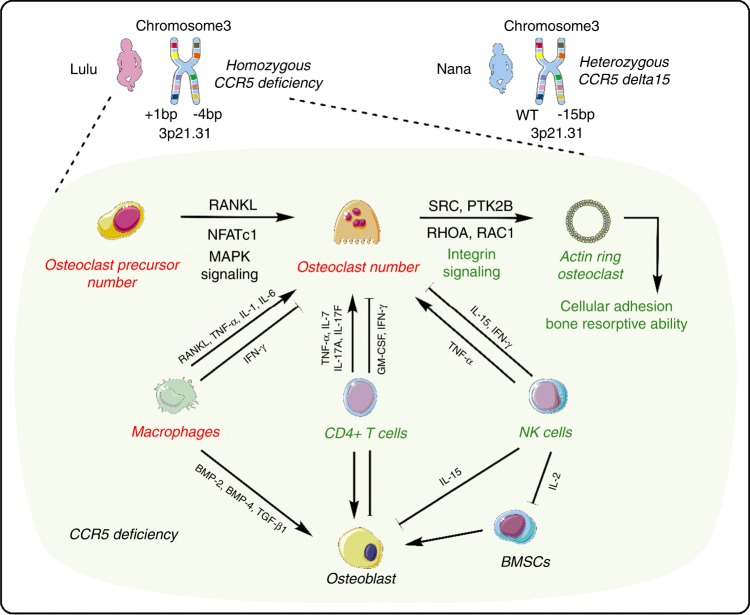Fig. 1.
The potential molecular mechanisms for vulnerability of a homozygous CCR5-deficient individual to bone disorders. The CCR5 gene is located at chromosome region 3p21.31. In Lulu, one copy of exon 3 in the CCR5 gene has an inserted base, with the other copy missing four bases. In Nana, a 15-nucleotide deletion (delta15) within one copy of CCR5 was described, with the other copy of the CCR5 gene remaining intact. Thus, Lulu may be a homozygous CCR5-deficient baby. Although the number of osteoclast precursors and osteoclasts were upregulated in CCR5-deficiency models, their cellular adhesion and bone resorptive ability were downregulated. Red characters indicate upregulated cell number or biological function, whereas green characters indicate downregulated cell number or biological function. Solid black arrows represent the promotion of cellular processes, and solid T bars represent the inhibition of cellular processes. CCR5: C-C chemokine receptor type 5; RANKL: Receptor activator of nuclear factor kappa-Β ligand; NFATc1: Nuclear factor of activated T-cells, cytoplasmic 1; PTK2B: Protein-tyrosine kinase 2-β; RAC1: Ras-related protein Rac1; RHOA: Transforming protein RhoA; MAPK: Mitogen-activated protein kinase; GM-CSF: Granulocyte-macrophage colony-stimulating factor; BMP-2: Bone morphogenetic protein 2; BMP-4: Bone morphogenetic protein 4; BMSCs: Bone marrow stromal cells. Original elements used in this diagram are from Servier Medical Art (http://smart.servier.com/)

